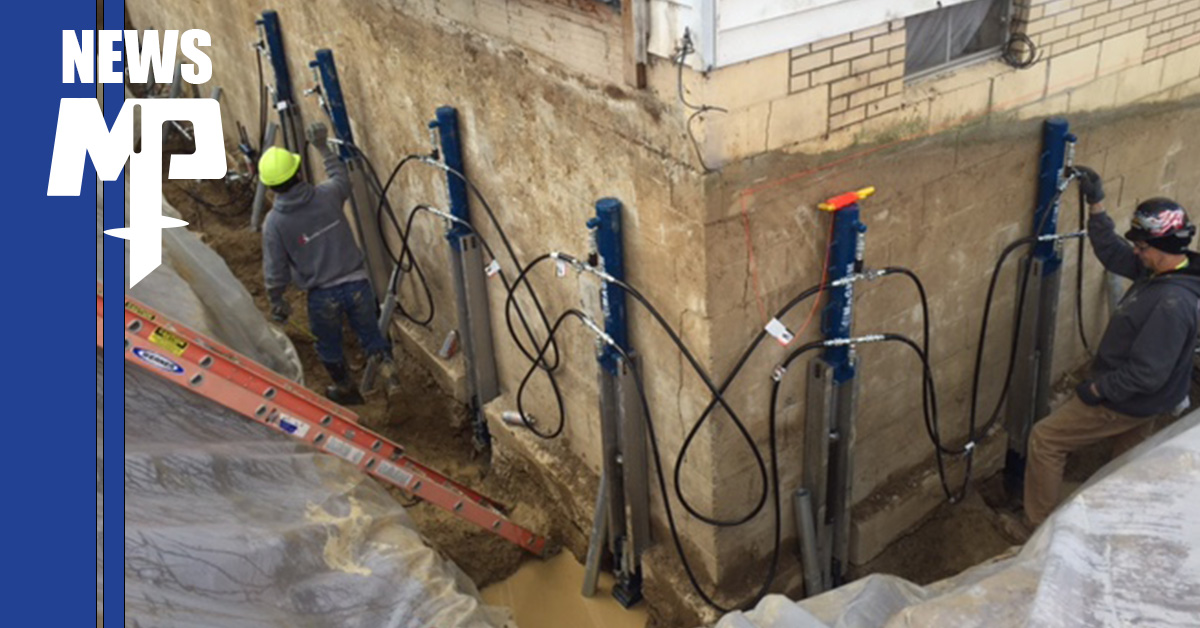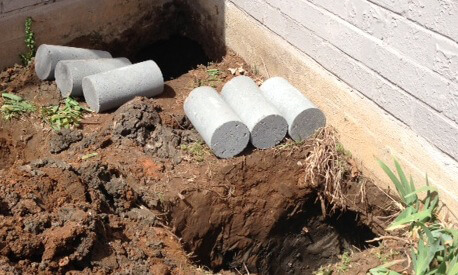Crucial Guide to Foundation Repair OKC: What Homeowners Need to Know
Crucial Guide to Foundation Repair OKC: What Homeowners Need to Know
Blog Article
Discovering Different Approaches of Structure Repair for Different Soil Types
Foundation fixing is a critical element of preserving architectural integrity, particularly when thinking about the varied obstacles positioned by various dirt types. The intricacy of dirt behavior under differing conditions requires a customized approach to fix, guaranteeing ideal remedies such as helical piers for unsteady soils or chemical cements for cohesive layers. The inquiry continues to be: exactly how do we establish the most effective approach for each unique scenario? Comprehending the interaction in between dirt attributes and repair work methods is crucial, yet there is even more to uncover in the quest for sustainable services. What aspects genuinely determine the selection of approach?
Comprehending Soil Types
Soil kinds play a vital function in the security and durability of structure structures, making it necessary for home owners and building and construction experts to recognize their characteristics and behavior. The interaction in between dirt and foundation can establish the architectural honesty of a building. There are a number of soil kinds, each with distinct physical residential properties that influence how foundations are designed and maintained.
Granular soils, such as sand and crushed rock, supply good water drainage and are frequently thought about steady. In comparison, cohesive soils like clays and silts show various actions.
Rocky soils, recognized for their strength and stability, offer exceptional assistance for foundations yet may need specific devices for excavation. Conversely, fertile soils, which are a balanced mix of silt, clay, and sand, frequently give favorable conditions for structure support due to their moderate drain homes.

Comprehending these dirt types is critical for choosing proper structure repair service approaches, making certain the durability and safety and security of frameworks gradually.
Difficulties With Extensive Clay
Among the numerous dirt types, large clay offers distinct difficulties for structure stability as a result of its tendency to go through significant quantity adjustments with wetness variation. This kind of soil swells when damp and agreements when dry, which can exert substantial stress on structures. These fluctuations can result in structure fracturing, heaving, and negotiation problems, posing significant risks to the architectural honesty of buildings.
The challenges with extensive clay are exacerbated by its plasticity index, which gauges the soil's capacity to change form and volume. A high plasticity index suggests better capacity for activity, enhancing the possibility of damages to foundations. This is especially bothersome in regions experiencing severe or frequent weather condition adjustments, where cycles of wet and completely dry conditions prevail.
Additionally, the depth of extensive clay layers can differ, complicating the evaluation and preparation of proper structure repair techniques. The unpredictable nature of its activity necessitates specialized design options to alleviate risks. Furthermore, large clay can influence energy lines, pathways, and driveways, better making complex repair initiatives. These intricacies need a thorough geotechnical analysis to make certain reliable foundation fixing methods are carried out, stressing the significance of addressing extensive clay challenges with knowledge and care.
Solutions for Sandy Soils
Sandy dirts, characterized by their huge bit dimension and low communication, existing distinctive challenges for foundation stability due to their propensity for shifting and erosion. By securing the foundation useful site to deeper, extra secure soil layers, these systems can give the essential assistance to counteract the shifting nature of sandy dirts.
One more recommended technique is the application of dirt stablizing methods. Chemical grouting, for example, involves injecting a maintaining representative into the dirt, which improves cohesion and reduces leaks in the structure. This procedure aids to solidify the sandy substrate, consequently lessening the danger of disintegration and motion.
Furthermore, mounting proper water drainage systems is essential in sandy soil problems. Making sure appropriate water drainage can stop water buildup around the foundation, which frequently intensifies disintegration and soil variation. Techniques such as French drains pipes or surface area grading can be employed to guide water away from the building perimeter.
Addressing Settling in Loamy Soils
Fertile dirts, known for their balanced mix of silt, sand, and clay, provide a fertile base for many structures yet can often cause foundation settling due to their distinct structure. This well balanced structure provides excellent drain and nutrient retention, making it excellent for agriculture and landscaping. Nonetheless, this same attribute can become troublesome for foundations, as shifts in wetness web content can create the dirt to expand or contract, resulting in clearing up.
Resolving resolving in loamy soils requires a diverse approach. Exact dirt screening is essential to figure out the particular make-up and wetness material of the loam. As soon as data is gathered, carrying out correct drainage options is necessary to maintain regular moisture levels, consequently lowering the risk of soil tightening or development. French drains pipes or surface grading work approaches to redirect water away from the structure.

Cutting-edge Repair Work Strategies
In the realm of structure repair service, innovative methods are continuously being created to deal with the facility challenges presented by various dirt conditions. As dirt types differ substantially in their structural homes, traditional techniques might not always are adequate. The introduction of brand-new innovations in foundation fixing offers extra Click Here customized options, ensuring stability and long life.
One remarkable development is the usage of helical piers, which are specifically reliable in extensive or unpredictable dirts (foundation repair oklahoma city ok). These piers are screwed right into the ground till they get to a stable layer of soil, providing strong support for the structure over. This method reduces disturbance and is versatile to various dirt types, making it a flexible solution
An additional cutting-edge technique is the application of polyurethane foam injection. This technique includes infusing high-density polyurethane foam under the structure to load spaces and support the framework. It is a less intrusive option to standard foundation, using quick installation with minimal disturbance to view it now the surrounding location.
Additionally, soil stablizing approaches, such as making use of chemical cements, have actually gained traction. These compounds boost soil toughness and decrease permeability, preventing future changing. Jointly, these ingenious repair work techniques give efficient options for the varied obstacles posed by differing soil problems.
Verdict

Structure repair is an important facet of preserving architectural honesty, especially when taking into consideration the diverse obstacles posed by various dirt types (foundation repair oklahoma city ok). The intricacy of dirt actions under varying conditions demands a customized method to fix, making certain optimum solutions such as helical piers for unstable dirts or chemical grouts for natural layers. By anchoring the structure to much deeper, much more stable dirt layers, these systems can provide the essential assistance to neutralize the changing nature of sandy dirts
Structure repair work needs careful consideration of dirt kinds to make certain security and longevity. Chemical grouts enhance dirt strength and reduce permeability in natural soils.
Report this page